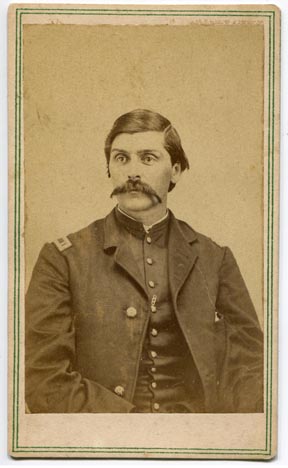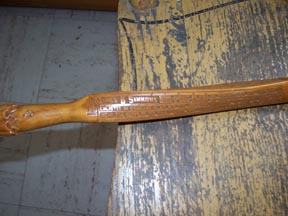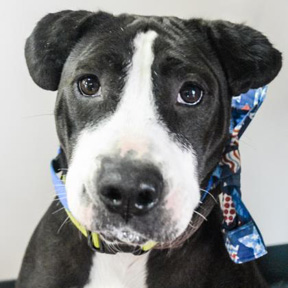In the museum of the Susquehanna Historical Society is an intricately carved cane, which tells a story unique to the history of the area. The artifact links the lives of Cyrus Clay Carpenter and Hyde Crocker.
Cyrus Clay Carpenter was born in Susquehanna County, Pennsylvania near Harford in 1829. His family was one of the nine original 1790 partners and his father, Asahel, was a prominent citizen of the Harford community. However, in 1842 when Cyrus was 13, his father died and his mother died shortly after in 1843. Undaunted, the young boy continued his education in the common schools in the area and enrolled in the “local” college of Harford Academy in 1849. After graduating from the Academy in 1851, he set a course westward, by foot and by stagecoach through the states of Ohio, Indiana, and Illinois, spending his time observing the country and pursuing job opportunities. His wanderings and talents eventually brought him to his first public office as a surveyor in 1855, to Commissary of Subsistance in the Civil War under General Sherman, to governor of Iowa, and to two terms in the US House of Representatives.
Hyde Crocker was also born in Susquehanna County, Pennsylvania in Montrose but in 1834. He also served in the Civil War, enlisting on April 18, 1861. He took part in 32 battles and was captured at the Battle of Brandy Station on June 9, 1863. He served time as a prisoner of war in various Confederate prisons including Libby prison and was finally paroled in March of 1865. After the war, he returned to Montrose and worked as a mail agent on the railroad. But Hyde Crocker had a particular skill and that was carving. He became known for his intricately carved canes.

Hyde Crocker, photo courtesy of the Susquehanna County Historical Society
Some months before the Centennial of Harford’s founding in 1890, Crocker asked for the names of the nine partners and their children, stating that he was preparing something of interest for the Centennial. Soon he asked for an abbreviated history of Harford Academy. Then he asked for the names of the Centennial committee members, the dates of their meetings, and the prominent dates in Harford history. All of this, he carved on a cane which was presented to Cyrus Clay Carpenter, the ex-Governor of Iowa.
The picture of the cane shown in this article is example of Crocker’s work. It is a cane which commemorates the history of his Civil War regiment and was used by Crocker and eight of his fellow veterans to commemorate the graves of Civil War soldiers.

Cane carved by Hyde Crocker with the history of his Civil War regiment
The Montrose Fire Engine Company No. 2 has another Hyde Crocker cane, which has the names of soldiers who were in prison with Crocker. The origin is not known but it does beg the question – did he carve this cane during the two years he was in prison or did he remember all the material?
Northeast Pennsylvania has a unique history, which is being well told by its museums. Many of the exhibits in the museum of the Susquehanna County Historical Society in Montrose tell the stories of area residents. The Luzerne County Museum in Wilkes-Barre has Native American artifacts found at various nearby sites on the Susquehanna River. In Tunkhannock, the Wyoming County Museum brings the life of Tunkhannock in the 1800’s to life with items donated by local residents. At the Soldiers’ Orphans School in Harford there are objects from a Civil War era school in buildings that were part of the school itself. The Montrose Fire Engine museum has a large collection of fire fighting memorabilia as well as antique toys manufactured by a toy factory based in Montrose. Croquette was a specialty. You don’t have to travel far to gain an understanding of the depth of the history of the Susquehanna area.
Featured as our Pet Of the Week is the adorable Claire. This pup has it all; cute as a button with an amazing personality, loves people, and gets along well with dogs and cats. Housebroken, microchipped, and spayed, this wonderful 3 year old pooch would make a great addition to any family. Please stop in and meet this sweetheart and add some joy to your life!

Claire
Thanks to all of our faithful followers, our shelter friends are all sporting beautiful new collars! We think their spirits have been lifted and hope renewed! Stop by any day of the week to see them in their new finery. Thank you to everyone who supported "Project Pretty Collar” and has helped make our shelter friends look a little bit more special.
Fact: Dogs and humans have the same type of rapid eye movement (REM) when they sleep. It is during the REM stage that dogs can dream. You can make a shelter pet's dream come true by giving them a forever home!
Imagine if there were a way to save taxpayer money, fulfill an important role of government with far greater accuracy and efficiency, and bring about increased participation in our democracy.
There is such an innovation already in use in nearly two dozen other states that have found it to be highly successful.
This tool is online voter registration (OVR), and it is now available to the citizens of Pennsylvania. Implementing OVR in the Commonwealth is a meaningful and necessary step toward the Department of State’s goal of making voting more accessible to all who are eligible.
Online voter registration is an idea that makes good sense in many ways. For one, registration is more convenient and accessible. It also increases security and makes voter rolls more accurate. Additionally, the cost of processing applications decreases dramatically as the need for labor-intensive data entry is reduced.
Recently, I attended the annual conference of the National Association of Secretaries of State. I listened with great interest as other chief election officials told of their states’ experiences with online voter registration.
Of particular interest to me were the accounts from former skeptics, officials who once had concerns about OVR for one reason or another. Without fail, they said the system has been a valuable addition to their voter registration options. They have found that OVR increases accessibility, efficiency and accuracy.
Those stories are backed up by a May 2015 report from the Pew Charitable Trusts. In Arizona, which in 2002 was the first state to launch OVR, Pew reports that election officials saw the cost of processing voter registrations decrease from 83 cents per traditional paper form to 3 cents for each online registration.
Those are cost savings that will be realized in each of Pennsylvania’s 67 county voter registration offices. Cost savings, though, are not the only benefit to the counties. They can also expect greater efficiency in processing applications, leading to more accurate voter rolls.
Over the years, the Department of State has heard of the difficulties counties face in processing voter registrations. County staffers must try to decipher handwriting that is often illegible. Or maybe a required field is not completed, so the county must contact the applicant and make a good-faith effort to obtain the information necessary to process the application.
Traditionally, counties receive the bulk of handwritten applications in the final days before an election registration deadline. That means counties often must pay overtime or hire temporary staff in order to process thousands of last-minute submissions. This challenge is significantly greater in presidential election years.
With online voter registration, processing each application will take far less time. An applicant’s completed electronic form will be forwarded directly to the appropriate county for processing. The electronic application will not be transmitted if required information is missing. There is no illegible handwriting to be considered. County staffers will need to verify only that the applicant’s information is correct, that the voter is not already registered, and that there is a signature on file.
Implementing OVR in Pennsylvania is made more feasible because the required technical platform has been built to align with current systems and programs. The online registration system mirrors the existing electronic Motor Voter Registration program in use at the Department of Transportation (PennDOT). The applications submitted through the online system will fully integrate with the Statewide Uniform Registry of Electors (SURE), already used by all the counties.
As for the security of online voter registration, our system incorporates the latest data security protocols. These measures will be constantly monitored and updated. In addition, an applicant’s personal information will not pass through several hands before the registration is processed, which can occur with a paper application filled out and handed to a volunteer.
As elsewhere, Pennsylvanians have grown accustomed to doing business online, whether it is shopping, banking or filing their tax returns. People not only accept online transactions; they expect them. They want to conduct such transactions from the convenience of their own computers or mobile devices.
The Department of State knows from the experience of other states that online voter registration will quickly become the preferred tool for newly eligible citizens to register – and for existing voters to update their records. With OVR, Pennsylvania too will realize the benefits of increased convenience, accuracy and cost savings. We believe that citizens who take the responsibility to register to vote deserve to have the most convenient option available to them.
In the Commonwealth, there are approximately 2 million citizens who are eligible, but not registered to vote. We hope OVR is one reform among others that will significantly reduce that number. The result will be more Pennsylvanians exercising their most fundamental right of citizenship – the right to vote.

















